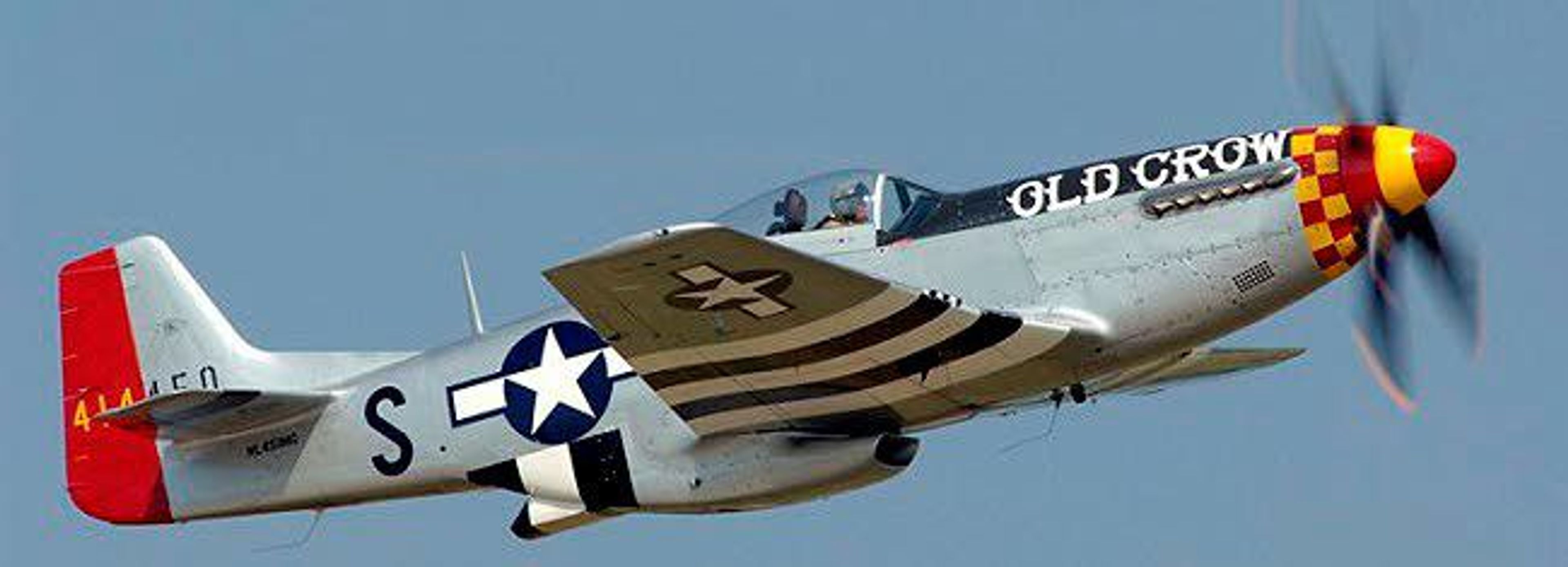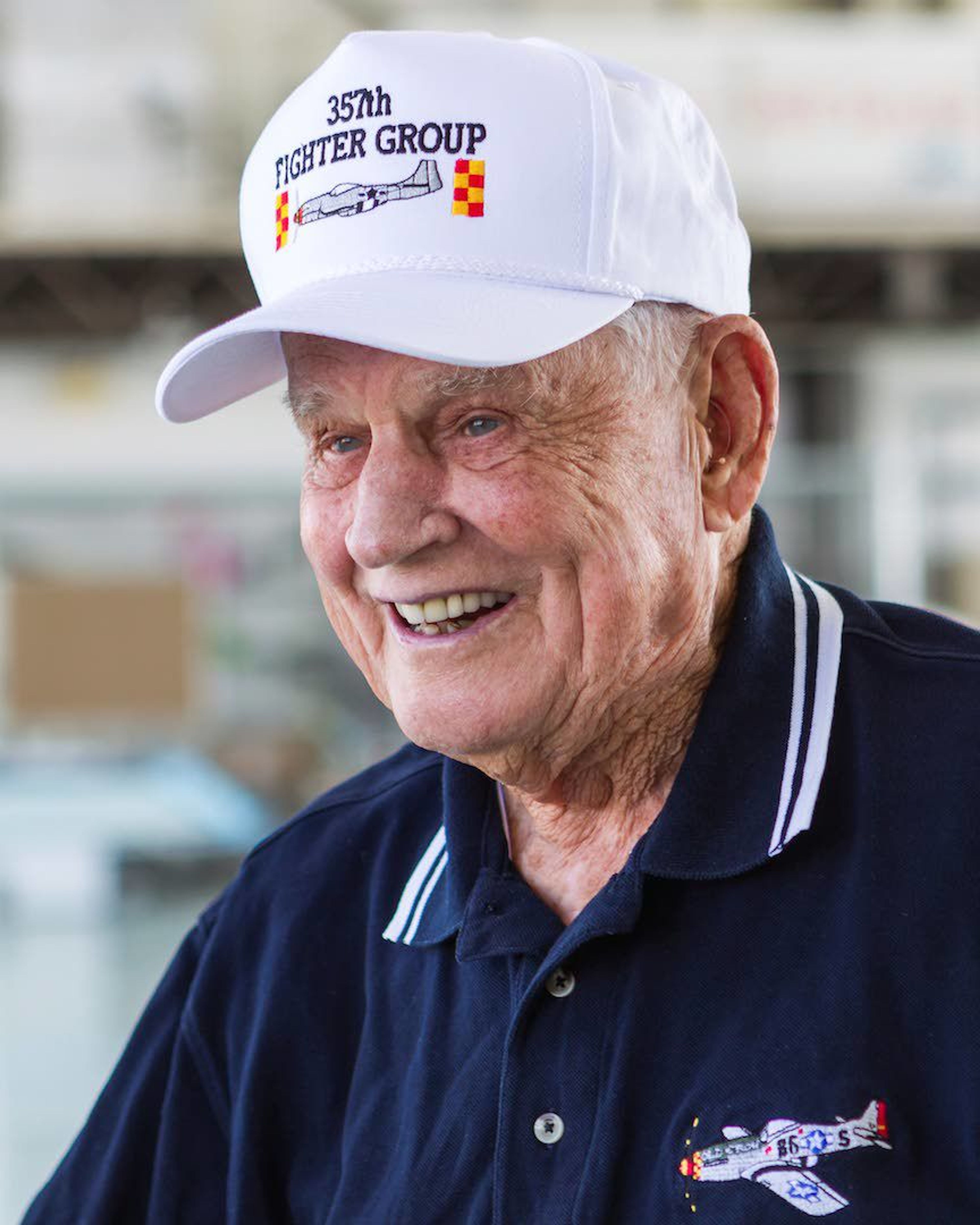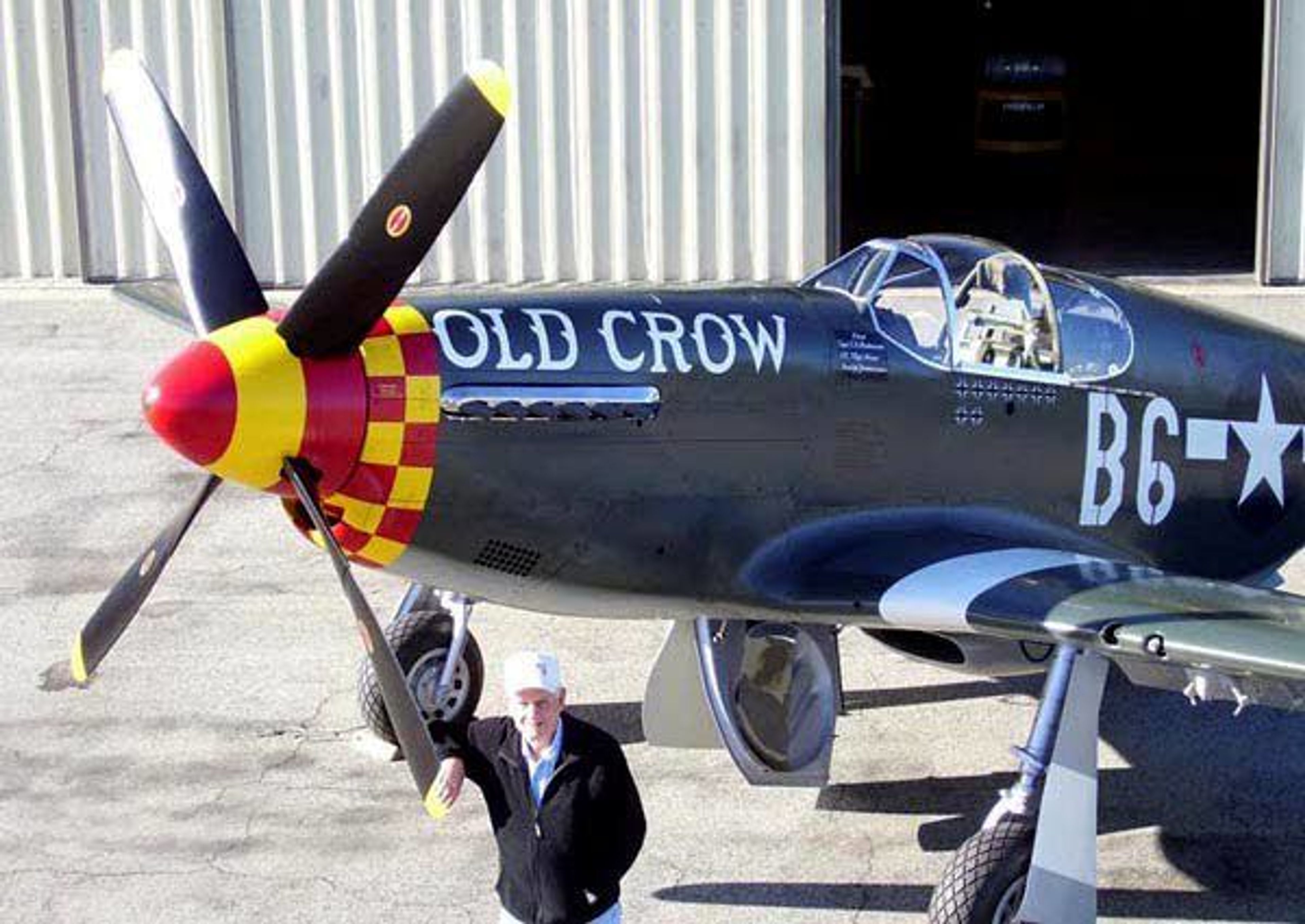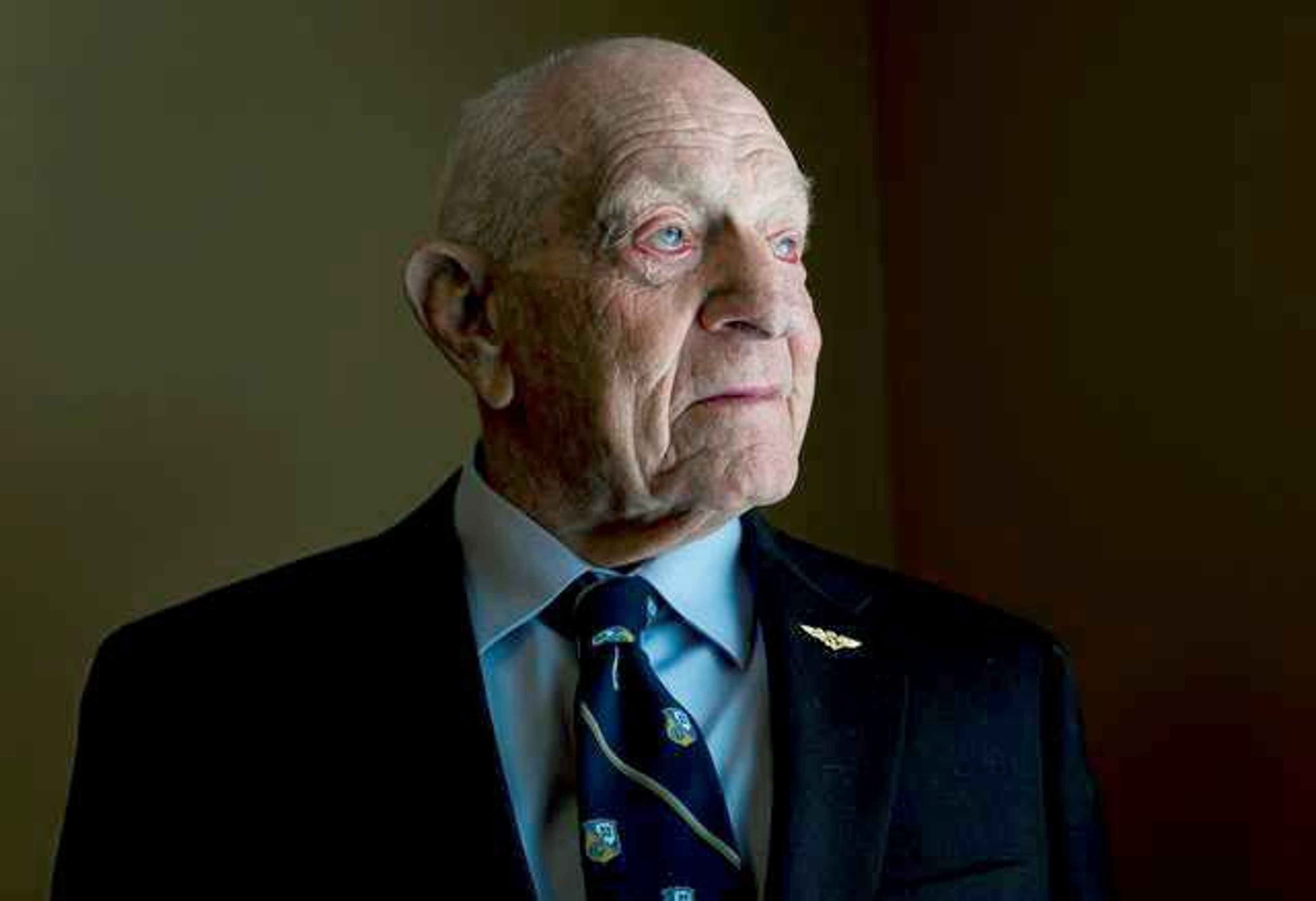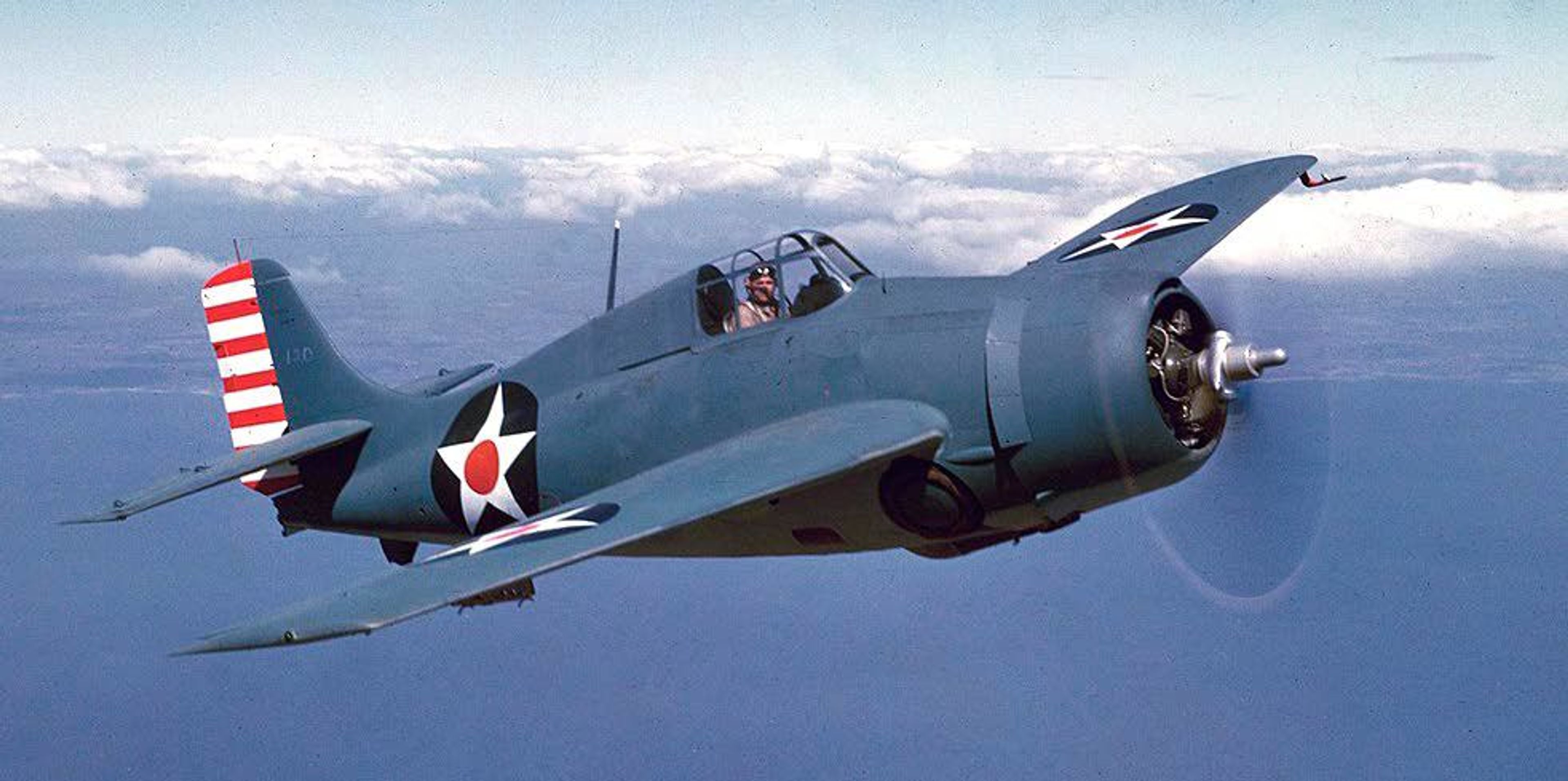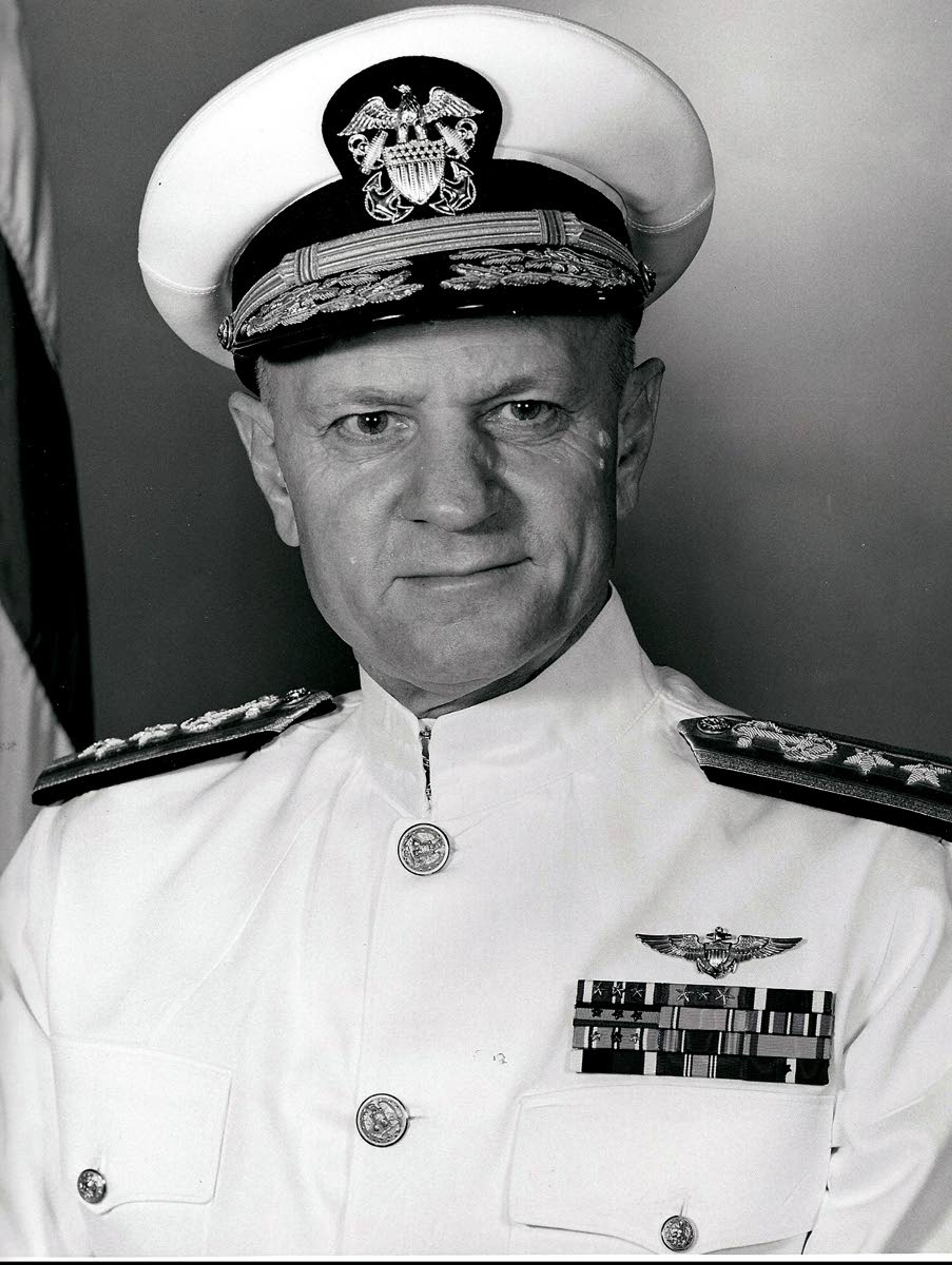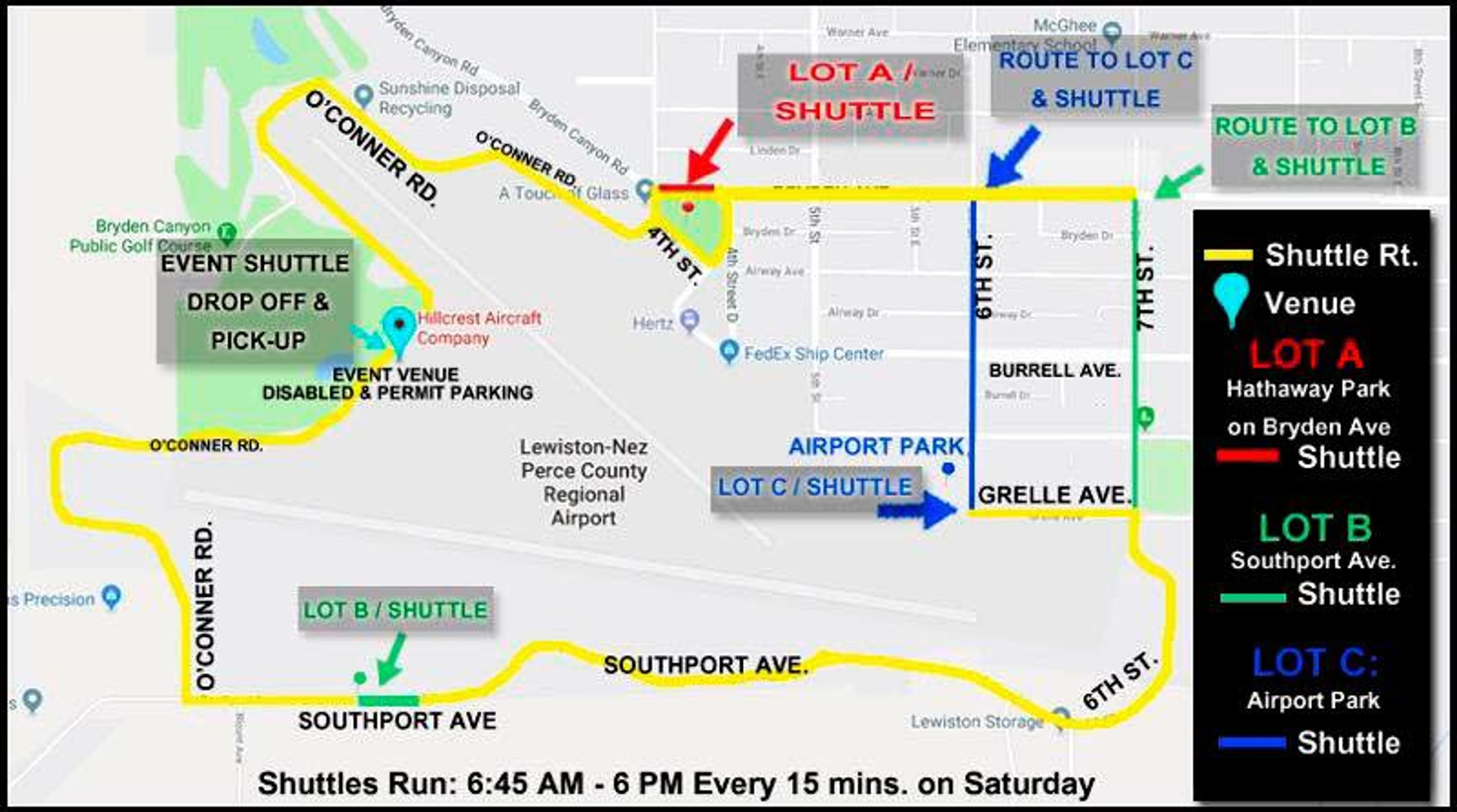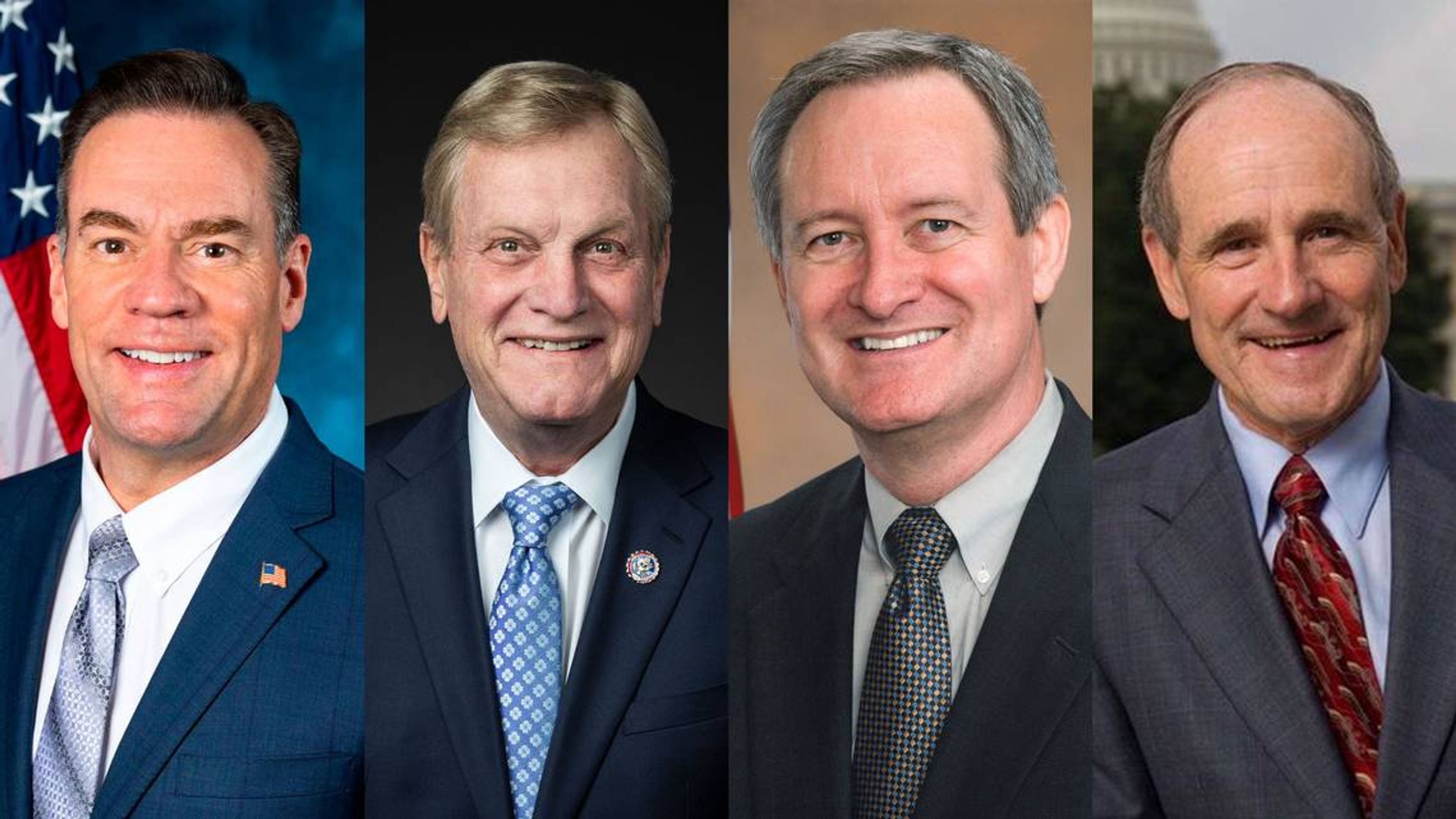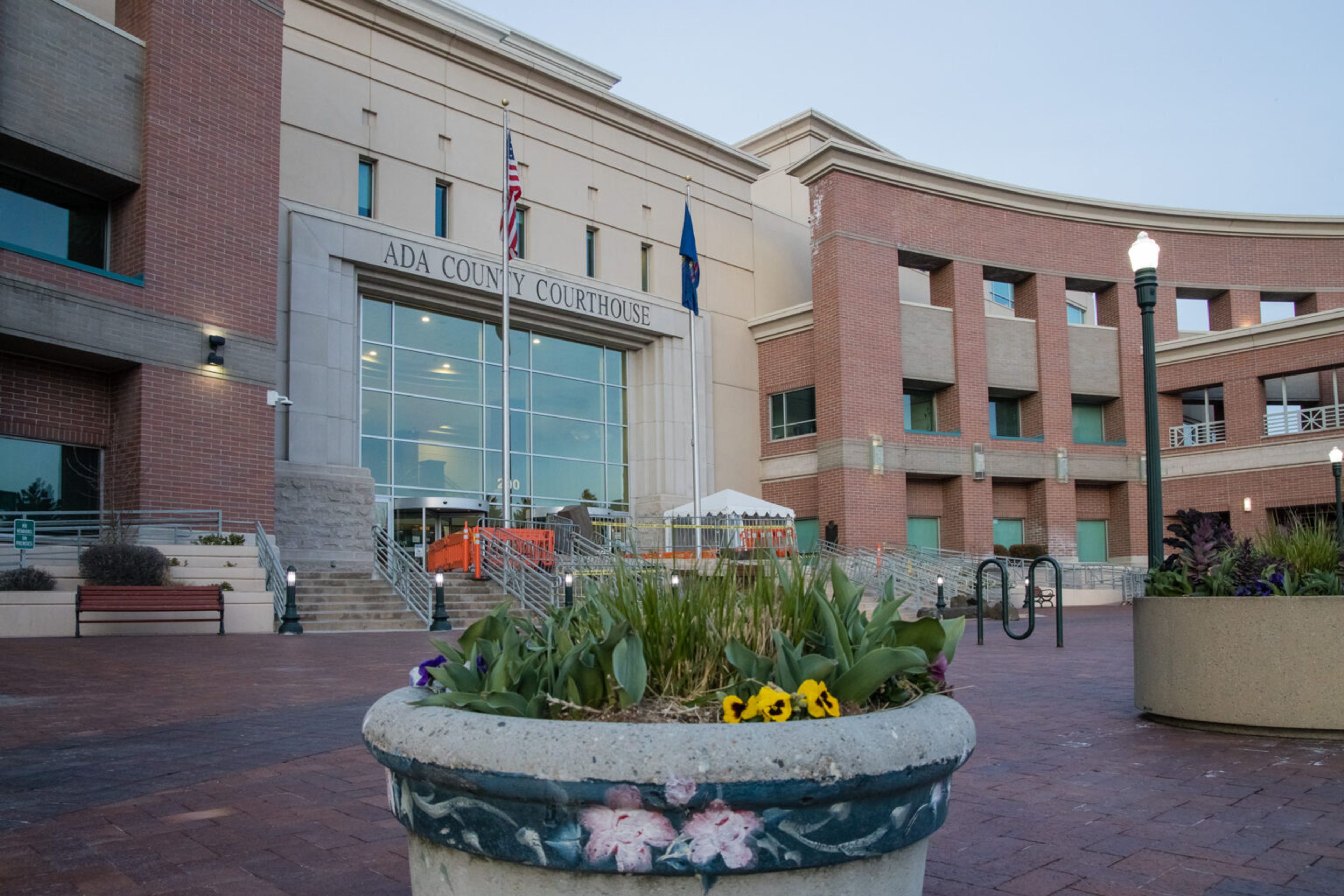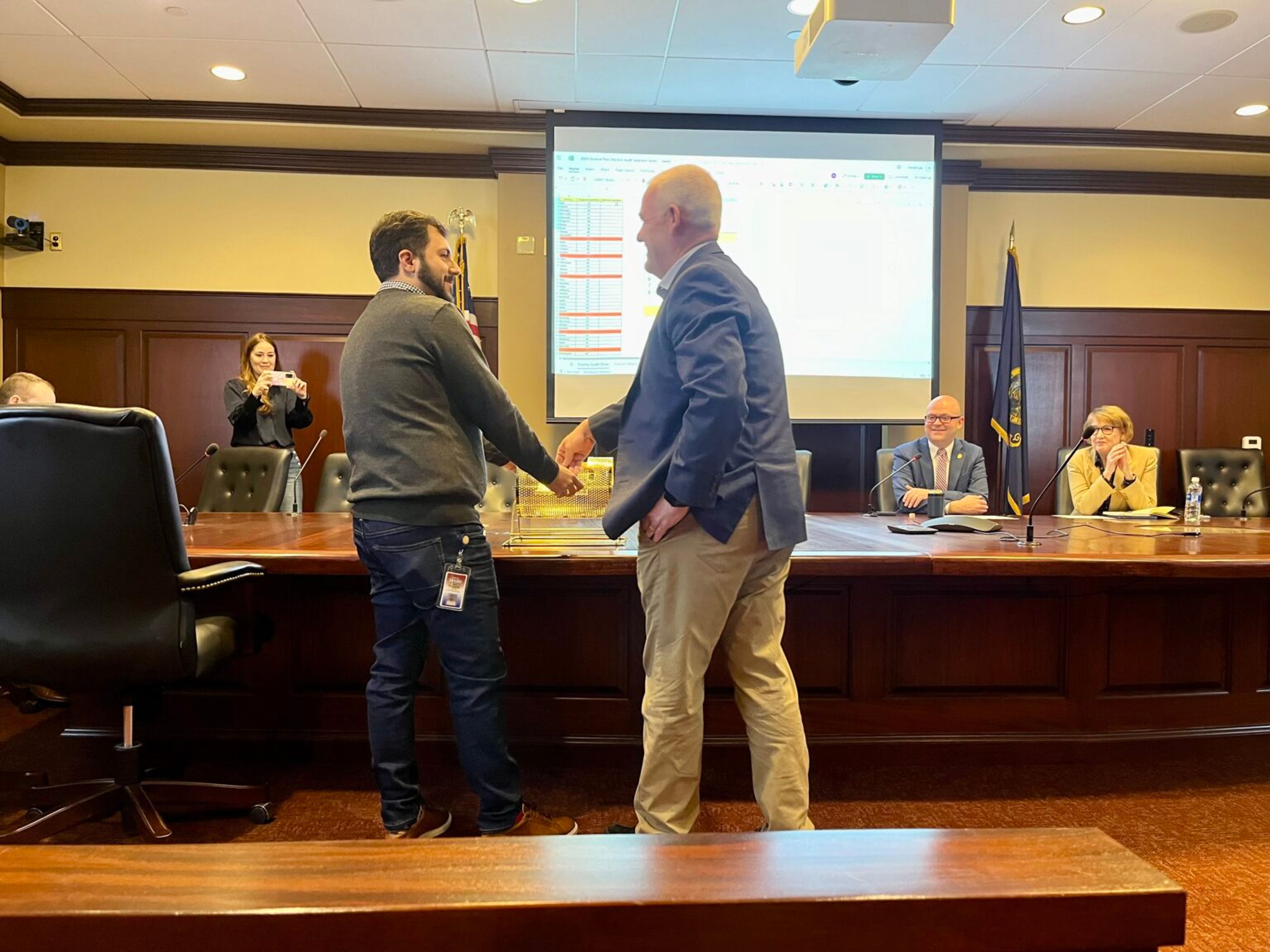Old Crow flies again
Renowned WWII flying ace Clarence ‘Bud’ Anderson and a replica of his favorite plane will visit Lewiston for Radials N’ Rivers Fly In
When the U.S. military put its best aeronautical engineers together with its best pilots in World War II, scores of smoking enemy planes fell from the skies.
An astounding number of those kills came from triple ace Clarence “Bud” Anderson, who took out 16 1/4 Luftwaffe planes over Europe during two highly decorated tours of duty.
The Auburn, Calif., native pulled off the feat largely because of his innate flying talent. Squadronmate and friend Chuck Yeager — the first person to fly faster than the speed of sound — famously said Anderson was “the best fighter pilot I ever saw.”
But Anderson, 97, also gives credit to the fast and ferocious P-51 Mustang variants that carried him into battle, especially the B model that ditched the earlier cockpit cover made of a web of metal and plexiglass for a roomier, sliding type.
“They took the birdcage off and they put a little fish bowl around it,” Anderson mused by phone recently from his home in Auburn. “And man, that was really good vision out of it. It was as good or better than the D (which came later). But I liked the D because it had more guns. But I shot down more airplanes with the B. So I don’t know. It’s sort of my favorite.”
The man and several restored iterations of his deadly machine will be on display this weekend at the third annual Radials N’ Rivers Fly In at the Lewiston-Nez Perce County Regional Airport. Organizer Gary Peters said there will be at least six Mustangs at the show, including representations of all of the major variants.
“To have the five models together, I don’t know if that’s ever been done before,” Peters said.
Events begin Friday evening with a banquet and night flight that will feature Anderson alongside Coeur d’Alene resident and Pacific theater ace Edward “Whitey” Feightner, the fly-in’s honored guest last year. The Mustangs and dozens of other antique planes and warbirds will fly and be on display from 7 a.m. to 5 p.m. Saturday, and flights on some aircraft will be available for purchase.
Full details — including a schedule and parking map — are available online by searching for Radials N’ Rivers on Facebook. Peters said 8,400 people attended the event last year. But the advance buzz on social media is strong, and he expects about 10,000 attendees this year.
Not a scratch on him
One of the more incredible aspects of Anderson’s sterling combat record almost defies belief: He did it all without suffering as much as a scratch or a mechanical failure that led to a failed mission.
“Four-hundred-eighty hours and 20 minutes of combat flying,” he said. “I had a super-good crew, and I wouldn’t abort for little bitty things.”
But while the sleek, powerful Mustang was his reliable aircraft on those flights, nothing is ever perfect. Anderson recalled one instance that was probably the closest he came to disaster. It was 1944 and an ominous smell hit his nostrils as the squadron was returning to England after a mission.
“Here I am 500 miles from home and smoke was in the cockpit,” Anderson said. “And the engine sounded funny. The exhaust stack had broken and dropped down so it was pouring the exhaust back into the engine.”
The heat burned up some of the Mustang’s wiring, and Anderson lost his radio and other electronics. But he still had power from his engine and control over the plane’s movements, so he was able to nurse it back to base.
“He’s just methodical, just tenacious and very well-prepared,” Peters said. “I’d feel sorry for anyone who went up against him in battle.”
Anderson also flew on D-Day, which passed its 75th anniversary earlier this month. But while he liked the idea of flying in behind enemy lines under the cover of darkness on the morning of June 6, 1944, it didn’t pan out.
“It was a great plan, but it was kind of difficult to do in the dark,” he said with a chuckle. “I was in the second flight, and we had no engagements. But we had done our job. We had defeated the Luftwaffe in the spring of ‘44, so we didn’t see anything.”
His most famous plane was a P51-B that he dubbed Old Crow.
“I tell my nondrinking friends it’s named after the most intelligent bird that flies in the sky, the crow,” he said. “But my drinking buddies know it’s named after a good-old Kentucky straight bourbon whiskey. It was the cheapest thing we could find during World War II. I wouldn’t say it’s a top-rated whiskey.”
A meticulous replica of Old Crow owned by NASCAR team owner Jack Roush will be at the fly-in as a special tribute to Anderson, Peters said.
Anderson ended the war with 16 1/4 confirmed kills because he shared one of them with three other pilots from his flight. That number makes him the leader of the nation’s living 33 aces from all wars, he said.
Even at 97, Anderson still relishes his celebrity. He attends one or two aviation events per month each summer, and has been to the Warbird Roundup at the Warhawk Air Museum in Nampa a few times. Next month, he will be the honored guest at the annual Experimental Aircraft Association AirVenture in Oshkosh, Wisc., the largest such air show in the world.
“I go to more events than I probably need to,” Anderson said when asked if he ever tires of the attention. “When people ask me that question, I say, ‘Well, I didn’t have to go. I could have stayed at home.’ ”
Birds of a feather
Peters said the Lewiston fly-in is a different kind of air show because it unites the typically separate worlds of antique aircraft and warbirds.
“Our mission three years ago was to create a different kind of event,” he said. “Normally they’re like oil and water. But if you want to tell the whole story, you have to have antiques and warbirds.”
The show is organized so people can get a first-hand look at the evolution of airplanes, from the slow-but-nimble workhorses used to access the Idaho backcountry to the trainers that pilots like Anderson and Feightner qualified in to the spiffy, long-range fighters and bombers that helped bring the Axis powers to heel in World War II.
“You’ll kind of get a feel for what those guys went through and the transition,” he said of how pilots would progress to more powerful, capable planes as they trained.
Anderson and Feightner will get a treat after Friday’s banquet when Old Crow will fly alongside a Grumman Hellcat, Feightner’s favorite fighter from the war. Then the Mustangs will fly in formation for a “photo mission” to capture images of them all in the air.
“They’re sexy and they’re beautiful and they were designed and built for one purpose: to kill people,” Peters said of the fearsome P51.
The group will include the only authentic A-model Mustang flying today, visiting from the Planes of Fame Air Museum in Chino, Calif. There will be Old Crow to represent the B-model, a rare example of the C-model and multiple D-models.
Peters was especially excited about the inclusion of one of the rarest Mustangs, the H-model that ceased production due to the end of the war. It’s 900 pounds lighter than its predecessor and sports a higher-pressure engine that clocks around 2,000 horsepower. He called it the “unicorn” of the Mustang family for its rarity.
Dozens of other people are planning to bring their own antique planes and warbirds to the fly-in, Peters said.
“They love our airport,” he said, describing its perfect location. “It’s safe and its gorgeous. The terrain goes away in almost every direction.”
Mills may be contacted at jmills@lmtribune.com or (208) 848-2266.
